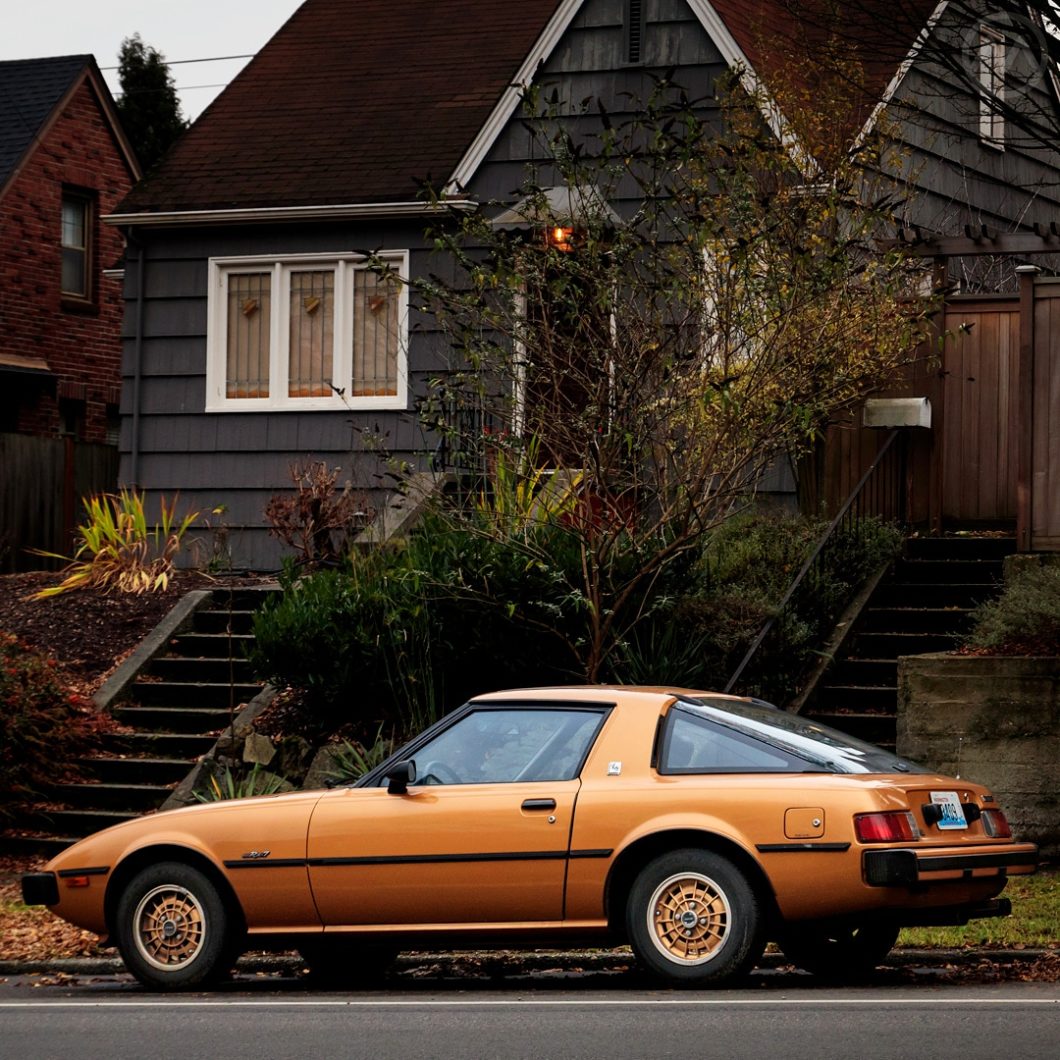“An enthusiast’s dream come true,” said one review, and in many ways, Mazda’s original SA22C (later “FB”) RX-7 was exactly that. It was affordable, fast, good looking, well made, and earned praise from all quarters for being an impeccably balanced sporty GT.
Universal praise like that is rare, and even more remarkable given Mazda’s uncertain state during the years it was developed.
In 1975, Toyo Kogyo was reeling from OPEC 1 – The Rotary wunderkinds of the early 1970s were now unwanted due to their thirst, and CEO Kouhei Matsuda’s autocratic style made it hard to quickly turn the ship.
Post-OPEC blues
Mazda was responsible for about a quarter of employment in Hiroshima, and major creditor Sumitomo Bank was worried about the whole concern going under. It first tried to sell a stake to Toyota, but when that didn’t happen, Sumitomo got tough with Matsuda. He grudgingly accepted new execs appointed by Sumitomo at the dawn of 1976.
That May, the development of what became the RX-7 got underway in earnest.
Mazda had wanted to build a small sports car for years – the first steps were the X110 and X020/A studies in 1970, but they had not been greenlit. They re-emerged in 1974/5 as the X408 idea from designer Makoto Kinutani and chassis specialist Jiro Maebayashi.
X408 became X516 and X517 – a related sedan/coupe that shared mechanical pieces with the sports car, but the future of these projects was uncertain in 1975. It was one of the Sumitomo-appointed execs, Shinpei Hanaoka, who approved the development of the pair – X516 became the X605, destined to become the RX-7, X517 became the CB-series Capella/626.
The “X605” project was headed by Kohei Matsuda, with Sumio Mochizuki as chief engineer and Matasaburo Maeda in charge of styling. With the Rotary taking a big share of blame for Mazda’s woes, but being something unique to Mazda, engineer Kenichi Yamamoto had to personally persuade Sumitomo execs that the Rotary was the right powerplant.
Maeda’s team did hundreds of studies in rapid succession – the timeline was relatively short – and came up with a sleek, aircraft-inspired, ultra-clean wedge that was totally modern like a TR-7, but somehow more conventionally attractive. Inside it was also clean and modern, though Maeda didn’t really like the early interior materials.
A few renditions of the car did not use the famous pop-up headlamps – engineers debated about whether they would be reliable, and some early designs had a kind of “Frogeye Sprite” arrangement. Ultimately, the pop-ups won out and the styling was locked down by November of 1976.
Power came from a revised 12A Rotary, an engine that had a huge tax advantage in Japan – there was no other 1.2L engine in the world that could match it for power or weight – which was part of Yamamoto’s argument for keeping it alive in specialty cars.
RX-7 Arrives
Hanaoka was very familiar with the U.S., and figured the sports car would do well there. He was right. Despite OPEC II and a recession, the RX-7 was instantly popular in the USA after it arrived in the summer of 1978.
It would be lightly revised in 1981, but before that happened, a special run of 2500 luxury-equipped RX-7 “LS” models, 500 (maybe) in Solar Gold, were built for the 1980 model year. The LS came with almost all the options and were characterized by the gold wheels.
SA22 RX’s can be ID’d by their bumpers, which aren’t fully integrated into the car. The biggest changes for 1981 (as SA22C became “FB”) was more integrated, plastic-covered bumpers and, to Maeda’s delight, upgraded interior materials.

